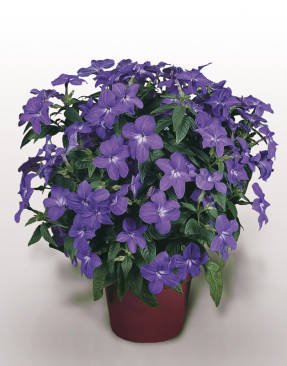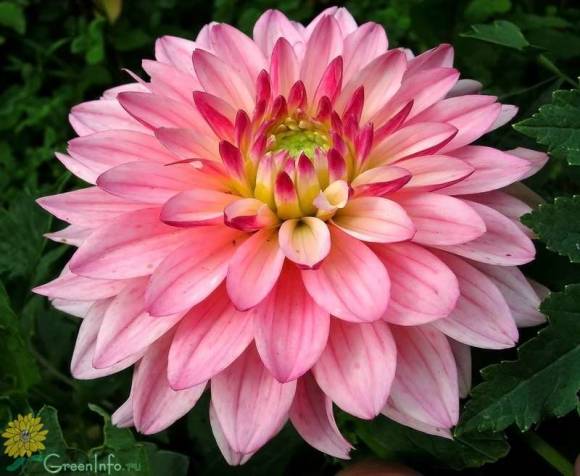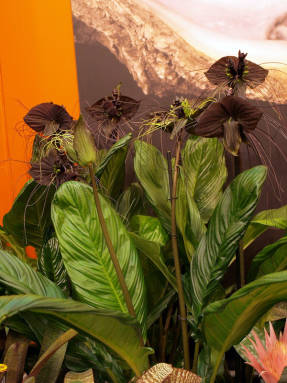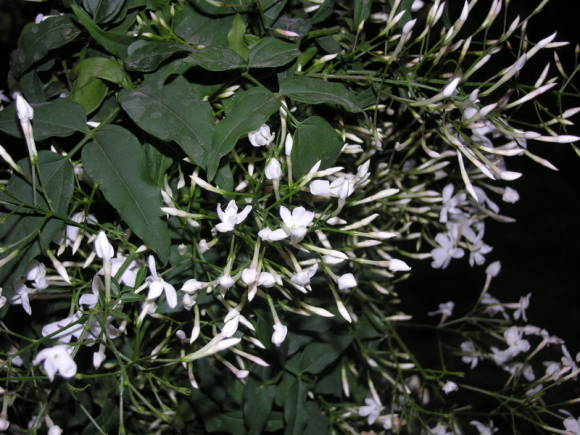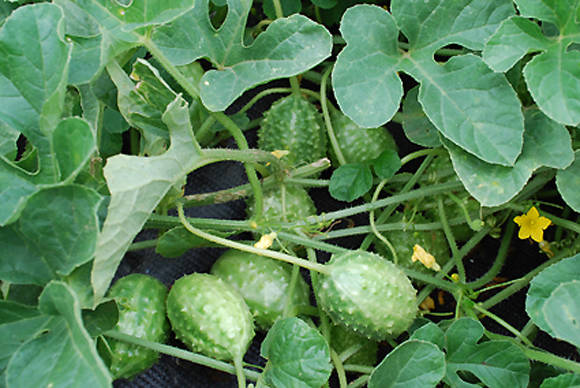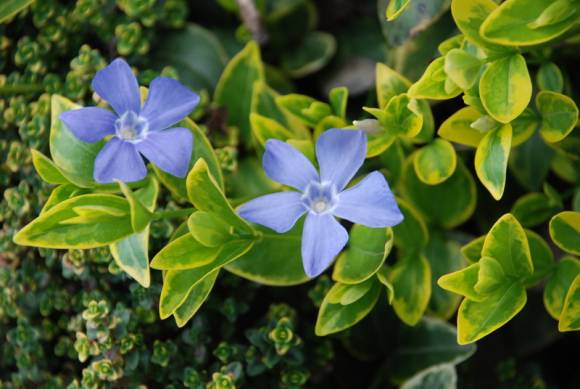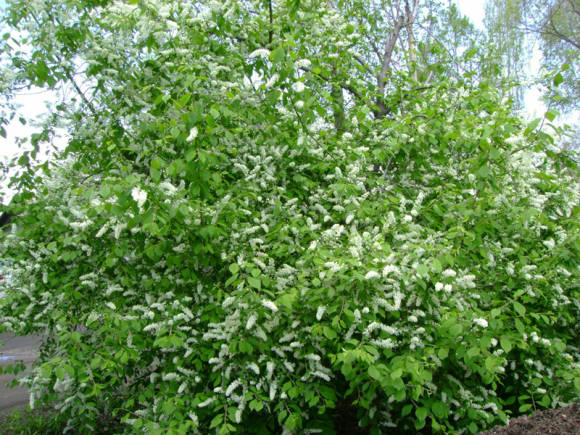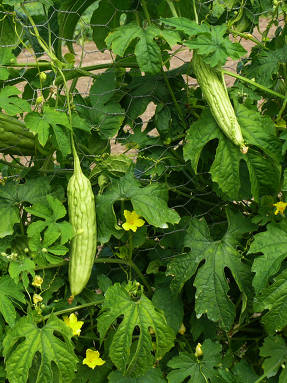About the variety of citrus plants - in articles
Choosing citrus plants
Kumquat - secrets of the success of the "golden orange"
Lemonarium in the house
The place of origin of citrus crops is considered to be the countries of Southeast Asia, where a warm subtropical and tropical climate prevails. It is warm all year round, with a slight drop in temperature in winter, a lot of light and fairly humid. Therefore, citrus plants both in summer and in winter require a well-lit place. Daylight hours all year round are about 12 hours; in our climate, spring and autumn are the most suitable for the length of the day. Most species do not tolerate even short-term and short-term frosts at all.
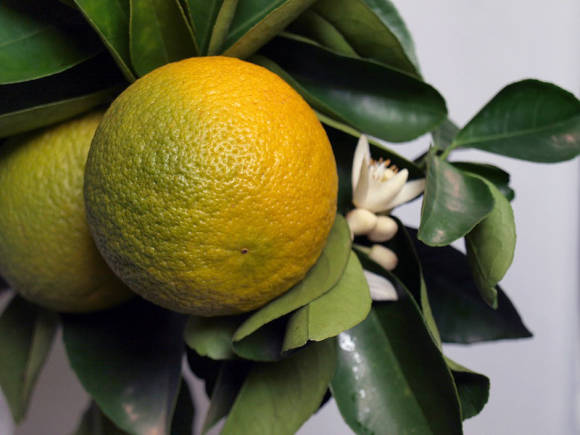
One of the characteristics of citrus plants is uneven growth. After a period of active growth, a dormant period begins, when young shoots and leaves stop growing, and the wood ripens. Only after this does a new wave of shoot growth begin.
Many indoor citrus fruits are characterized by remontability, the ability to bloom and set fruits several times a year. The flowering of grafted plants or those grown from rooted cuttings occurs almost immediately. The flowering of seedlings in nature usually occurs in some species for 4-5 years, in others only for 12-15 years, but it is almost never possible to wait for the flowering of citrus seedlings at home.
The optimal conditions for the development of flowers will be a temperature of about + 18 ° C and an air humidity of about 70%. The flowers are bisexual and in many varieties are self-pollinating, but for the reliability of fruit setting, it is better to resort to artificial pollination with a soft brush. After flowering, not all ovaries remain on the branches, many soon fall off. The ovary can be considered complete if it has reached at least 2 cm. Fruits ripen, depending on the specific species or variety, from 5-9 months, and can hang on the tree until the next harvest. By the way, the color of the peel is not a sign of ripening. So, in the tropics, where there is no cool winter, the color of ripe fruits remains green. The orange color also does not indicate the maturity of the fruit. If not picked in time, the peel may turn green again and then be re-colored.
 |  |
Winter content. Species originating from the subtropics require a mandatory decrease in temperature in winter, this is their physiological need. Illumination and temperature of the content affect the degree of plant metabolism: the higher they are, the more actively the vital processes proceed. The hardest time for citrus crops at home comes from the end of autumn, when the amount of light drops sharply. It is through light that the plant receives energy in the process of photosynthesis. If little energy is produced (in conditions of a lack of light), but a lot is spent (in a warm room), the plant gradually depletes, sometimes "eats" itself and dies. In our winter conditions, even the lightest window sill does not provide the insolation that the plant receives in its homeland, therefore, citrus fruits in winter, with any backlighting, will always suffer from a lack of light. To help them survive the winter successfully, it is necessary to lower the temperature of the content and increase the illumination.
An insulated loggia or greenhouse with a temperature of about + 14 ° C and additional lighting is suitable for wintering (in cloudy weather - during the whole day, in clear weather only - in the evenings, so that the total daylight hours are 12 hours). Citrus fruits winter well in cool apartments or private houses. In a warm apartment, you can fence off the window sill from the room with a third frame or foil so that a lower temperature is established inside.
In the absence of cool wintering, citrus plants usually do not live longer than 3-4 years, gradually depleting and dying. Rest lasts from November to February.In early-mid February, when the day is noticeably increasing, most citrus crops "wake up".
 |  |
Content temperature. Temperatures that are too low or too high inhibit the normal development of citrus plants. In summer, it is desirable that the temperature be kept within + 18 + 26оС, in winter, coolness is needed, + 12 + 16оС. Never expose the plant to freezing temperatures.
Different parts of the plant (roots and crown) must be in the same temperature conditions. If the temperature in the zone of the root system is lower than in the zone of the crown, the roots do not have time to absorb the required amount of water. Otherwise, the roots absorb too much of it. Such differences lead to stress and can cause leaf fall in the plant. At the floor, the temperature is always several degrees lower than at the crown level, so it is better to put the plant on a small stand. If the room has warm floors, there is a risk of overheating for the root system.
When the roots absorb enough water that the leaves cannot absorb, dropsy develops and small, tough, wart-like growths appear on the underside of the leaves. This often happens after heavy watering in combination with a sharp drop in air temperature. It is not a parasitic disease, but the leaves do not regain their appearance. Sudden temperature changes (by 7-10 degrees during the day) can give an impetus to the leaves falling.
In spring and summer, it is useful to put citrus fruits on the balcony or take them out into the garden, where they grow and bloom beautifully. However, the pots need to be shaded from the sun. Through the heated walls of the pots, the roots get burned, the temperature balance of the roots and foliage is disturbed.
When the plant returns to the room in the fall, abundant leaf fall is often observed due to a sharp change in conditions. To avoid it, you should not wait for a strong cold snap and turn on the heating systems, but bring the plant in early. Then there will not be a large difference in temperature and humidity. You should also take care that the illumination does not drop too much.

Illumination. Citrus plants are very light-requiring, they should be protected only from the midday summer sun. Optimal placement in the south-east or south-western windows, and in the summer in the garden - under the light shade of trees. In winter, it is desirable to provide additional intensive lighting, with a day length of 12 hours. Without sufficient light, the plant will not be able to fully develop. Too long daylight hours in the middle lane, and especially in the northern regions, negatively affects the normal development of the plant.
A sign of a lack of light is the appearance of too large and too green leaves, and with a strong deficiency, yellowing and foliage falling off. The result of too bright illumination will be the formation of discolored, too light leaves, on which, with a sharp increase in light without prior adaptation, burns, white or black spots may appear. There is a high probability of such burns in February-March, when during the winter the plant "weaned" from the sun's rays.
Watering should be regular and moderate. Citrus fruits are not drought-resistant, but it is extremely important not to allow systematic waterlogging of the substrate. In summer and winter, always keep the soil moist, but between waterings, the top layer should dry out. When watering, make sure that the water has reached all the roots (it should go out a little into the pan, from which the excess must be drained). In summer, more frequent watering will be required, perhaps even daily (depending on the weather, the volume and composition of the soil, the size of the plant).
During the winter months, when the temperature is kept cool, the frequency and amount of watering is reduced. Keep the soil slightly damp, do not let it dry out, watering frequency approximately once every 7-10 days.
Irrigation water should be soft and free of chlorine.Hard water is softened by boiling, sometimes acidified with lemon juice (1-3 drops per liter). The temperature of the irrigation water should not be lower than the room temperature or 3-4 degrees higher. During the winter rest, do not water with too warm water, so as not to "wake up" the plant ahead of time.

Air humidity. Citrus fruits grow in regions with high air humidity, this must be taken into account when keeping them at home, spray with water on foliage or use a household humidifier.
Transfer. The root system of citrus plants has a peculiarity - it does not have root hairs, through which the absorption of water and mineral substances dissolved in it usually occurs. Their role is played by a symbiotic fungus that forms root mycorrhiza. The death of mycorrhiza leads to the extinction of the plant itself. It is very sensitive to conditions, suffers from a prolonged absence of moisture, lack of air in heavy and dense soil, low and high temperatures, and especially when the roots are exposed or damaged. Sometimes you can see outwardly normal roots in a dead plant - this is precisely what is explained by the death of mycorrhiza. That is why citrus fruits do not tolerate a transplant and can get sick for a long time after it. It is worth replanting citrus fruits only with the most accurate transshipment, in no case changing the soil or washing the roots (except for severe damage to the roots, when there is no other way out).
Read more about the transplant - in the article Transplanting indoor plants.
Citrus growing substrates... There are several recipes for citrus land mixtures - they include peat, sod and leafy soil, sand, and dung humus. It is important that the mixture is slightly acidic or neutral (pH 5.5 to 7.0). If your water is hard, then it is better to take a slightly acidic soil. However, mixing all these components separately and adjusting the acidity is difficult. It is easier to take a ready-made citrus soil (usually called "Lemon"), and bring it to the desired condition. Before use, the substrate must be heat treated in a water bath (to destroy larvae, eggs and adult pests, pathogenic fungi and bacteria).
Small plants should be transplanted shortly after purchase, as the peat soil dries out easily, and the roots that are tightly braided are easily overheated and dried. Then they are transplanted every year in the spring (if necessary). Older plants can be left untouched in the first year, and then transplanted every 3-4 years. Large-sized trees are not transplanted, but annually replace the top layer of the soil.
If you have purchased a small plant, which is usually planted in a peat substrate, it should not be changed in any way, nor should a denser soil be added - roots cannot germinate into it. It is better to use a ready-made peat substrate for the first transplant, adding sand and a little sod land to it. With further transplants, the amount of sod land in the mixture can be gradually increased.
Large specimens are usually already planted in the ground with the addition of sod land, so sand and more sod or leafy soil can be added to the finished mixture. It is better not to use manure humus in mixtures, but to replace it with a hood, which is added to the irrigation water.
And do not overuse loosening the soil, which can easily damage the roots.
Reproduction... Citrus crops are easily re-pollinated, giving rise to new hybrids with properties different from the parent plant. Therefore, in order to preserve the desired properties and accelerate fruiting, methods of vegetative propagation are used: grafting, cuttings, air layers. For industrial purposes, grafting is preferred, it makes it possible to select a stock of the desired quality (frost resistance, drought resistance, etc.). Some varieties have a poorly developed root system, and grafting on a powerful stock provides the plant with good roots. In home citrus growing, vaccinations are often used to breed especially capricious variegated varieties, but their implementation requires special knowledge and skills.Many popular varieties do not require them, they develop well from rooted cuttings, while fully retaining their maternal qualities and blooming quickly (often even at the rooting stage).
For rooting, use sterile soil (peat + sand). Rooting temperature is about + 25 ° C, always in a greenhouse, preferably with bottom heating. The light is bright, diffused, at least from a fluorescent lamp.
Ripe young shoots are taken for cuttings, which are currently at a dormant stage, this is important. If you take a shoot that is at the growth stage, then the probability of its rooting is very small. It is optimal for the shoot to be about 6 months old, and it has already turned from angular to rounded. Cuttings are taken only from healthy plants. The shoot is cut into segments of 3-4 internodes. The upper cut is made straight. The lower leaf is removed, an oblique cut is made directly under this bud, the bark is slightly scratched with a clean thin needle, dipped in the powder of the root formation stimulator Kornevin and immersed in the soil until the next leaf. If the greenhouse keeps moisture well, then it is better to leave all the leaves intact, without cutting off the leaf blades. They will serve as a source of nutrients for the cuttings. If the tightness of the greenhouse is poor, then so that the cuttings do not lose too much moisture, the two lower leaves will have to be cut in half. In the greenhouse, high humidity must be maintained. Rooting lasts from 2 weeks to 1-2 months, sometimes longer.
Read more in the article Cutting indoor plants at home
Freshly harvested citrus seeds germinate very well, usually within a month. Seedlings are actively developing and rather unpretentious. Beautiful trees can be formed from them by pruning, which will also enrich the atmosphere of the house with useful phytoncidal substances. But for fruiting, such seedlings must be grafted with cuttings of varietal plants.

Formation needed to give a beautiful and compact look to the crown. The best time for her is at the end of the winter rest period, in early February. In summer, too long and fattening shoots should also be shortened. Different types and varieties of citrus fruits have their own way of growing. So, a lemon is not very willing to branch, and it is quite difficult to form a compact, beautiful tree from it. The orange grows vigorously upward, requiring regular pruning. In a mandarin, the crown thickens quickly, you have to cut out part of the shoots growing inward. Kumquat grows quite compactly, requiring little or no pruning. Calamondin doesn't have to be cut too much.
Young plants grown from rooted cuttings begin to form almost immediately, giving the tree a beautiful look. Seedlings should begin to form at the age of one. If by this time they have reached at least 30 cm, the crown of their head is cropped. However, even the correct formation of seedlings does not lead to the long-awaited fruiting at home.
Top dressing. Fertilize citrus fruits only in the months of active growth, from mid-February to mid-September, and in no case should they be fed during the winter holidays. When preparing for the rest period and when leaving it, reduce the fertilizer concentration by 2 times. Carry out top dressing only on a pre-moistened earth coma. For a good assimilation of mineral fertilizers from the soil, it is important to control the acidity of the soil. To assimilate organic fertilizers, be sure to support the beneficial microflora of the substrate by systematic introduction of microbiological preparations (Vostok-EM1, Baikal, Renaissance). Plants respond well to foliar feeding.
You can not feed a heavily crumbling plant - the reasons for leaf fall are often not a lack of nutrition, and feeding, done at the wrong time, will only bring harm. After buying or transplanting a plant, do not feed it for 1-2 months.
And you should always remember the rule that it is better to underfeed the plant than overfeed. The lack of nutrition is easily eliminated by timely feeding, and an excess of fertilizer leads to root burns, improper development and often ends with the death of the plant. One of the signs of an excess of fertilizers is a dry border along the edge of the leaf and the beginning of leaf fall. An excess of one element often causes a deficiency in another, and it is rather difficult to diagnose this imbalance and pinpoint the cause. But in order to avoid it, you should take only special fertilizers for citrus fruits for dressing, which must include trace elements. The rates of their application are calculated for the period of maximum growth. If the plants have insufficient light or other conditions of keeping are not met, the dose of fertilizers must be reduced.
If you find a negative reaction to a new fertilizer, cancel fertilizing, flush the soil with plenty of water (by passing it through the soil, but without removing the plants from the pot), at first use only the foliar fertilization method (a highly diluted complex fertilizer with microelements is sprayed over the leaves once a week ). Then switch to a different brand of citrus fertilizer.
Physiological disorders associated with a lack or excess of nutrients
- Older leaves become dull, pale green or yellow - with a lack of nitrogen.
Nitrogen is one of the most important components of plant mineral nutrition. It is used to form essential proteins, chlorophyll and enzymes for plant cells. An excess of nitrogen leads to the rapid growth of young fattening shoots, to the formation of loose tissues, which become easily accessible to various parasites and pathogens, leads to starvation for other elements, the absence of flowering.
- Leaves lose their gloss, acquire a yellow tint, young leaves are narrow and small, flowering is weak - with a lack of phosphorus.
Plants need phosphorus for flowering and fruiting, it helps to resist disease. Excess phosphorus inhibits vegetative growth.
- The leaves show grooves and folds along the veins., later they brighten, turn brown at the edges. Growth is delayed, some of the adult branches die off. During flowering, a strong leaf fall can be observed - with a lack of potassium.
Plants use potassium to make sugar, starch, protein, and enzymes needed for growth and development. Potassium helps plants regulate water intake and better resist cold. Excess potassium results in brown necrotic burns along the edge of the leaf.
- Lack of iron, magnesium and zinc is manifested in chlorosis - against the background of yellow leaves, a green mesh of veins is clearly visible, growth stops, young shoots often die off. The lack of iron usually extends to the entire leaf; with a lack of magnesium and zinc, changes can be local in nature. Chlorosis is also caused by a deficiency of sulfur, manganese and zinc, as well as an excess of calcium. Citrus fruits with chlorosis require additional feeding with iron-containing preparations (iron chelate, Ferovit), and hammering rusty nails into the ground will not help the plant.
Magnesium (Mg) and iron (Fe) are essential for the production of chlorophyll. Sulfur (S), zinc (Zn), manganese (Mn) are "catalysts" that aid in the absorption of other nutrients such as nitrogen.
- Death of growth points, loss of natural color by young leaves, growth of defective leaves - observed with a lack of calcium and boron. Lack of calcium with hard irrigation water is excluded. Calcium (Ca) and boron (B) are essential for proper water absorption, and both are essential for proper cell formation.
Pests and diseases
The most common pests cirrus crops are mealybug, scale insect, false scale insect. Citrus fruits are also affected by aphids and spider mites.
- White lumps in the sinuses, on branches and trunks - a mealybug lesion.
- Plaques that look like droplets of wax on leaves, branches and trunks, sweet discharge on the leaves - a lesion with a scutellum or false scutellum.
- Irregular small yellow dots on the leaves, below the leaf there is a mealy bloom, sometimes a cobweb is a spider mite.
- The accumulation of small green or black insects on young shoots, sweet secretions - aphids.
- Small mobile light insects in the ground, jumping when watering - podura, or springtails. Plant when waterlogged, do not harm the plant. It is enough to reduce watering and spill with Aktara (1 g / 10 l).
- Small black flies flying over the ground are mushroom mosquitoes. They also start from waterlogging. The larvae live in the ground, but do not harm healthy roots. It is enough to adjust the watering, you can spill Aktara (1 g / 10 l).
Details - in the article Houseplant pests and control measures.
Diseases citrus fruits arise due to improper care and damage by various pathogens (which is also often due to errors in the content).
Fungal diseases often affect citrus fruits on plantations or in greenhouses. Drying and blackening of branches - malseko are of a fungal nature; gum therapy - gommosis, when a wound forms on the trunk, from which a liquid resembling resin oozes; leaf spot and anthractosis, when wet spots spread along the leaf and then merge; powdery mildew, when a white powdery coating forms on the leaves. The fight against fungal diseases is reduced to the establishment of care, to the removal and destruction of the affected parts of the plant, to the treatment with systemic and contact fungicides.
Sometimes a black bloom forms on the leaves of citrus fruits, which can be easily removed with a damp swab - this is a sooty mushroom. It does not harm the plant, usually settles on the sugary secretions of pests. It is necessary to eliminate the cause of the sugary discharge, remove the sooty plaque with a swab soaked in soapy water, wash well under a warm shower.
Diseases caused by viruses appear as a marbled coloration and cannot be treated.
Causes of yellowing of leaves: chlorosis caused by a lack of iron, magnesium, sulfur, zinc, excess calcium; lack of nitrogen; lack or excess of light; spider mite lesion.
The reasons for the appearance of brown spots on the leaves: non-compliance with the irrigation regime (overdrying or waterlogging of the soil); sunburn; a burn from a strong dose of fertilizer; imbalance in batteries; fungal and bacterial diseases.
Cause of falling leaves citrus fruits can have any strong stress: sudden temperature fluctuations, hypothermia, overheating, overmoistening of the substrate, overdrying of the substrate, improper transplantation, too much fertilizer dosage, prolonged lack of light.
Why is leaf fall dangerous? Depending on the age, lemon leaves perform different functions; with aging, they turn into a storehouse of nutrients, ensuring the growth and development of young growths. The loss of these leaves leads to the depletion of the plant.
